Honda HR-V vs Toyota Corolla Cross: 2024 Comparison

The 2024 Honda HR-V and 2024 Toyota Corolla Cross are two of the most popular subcompact SUVs. The Toyota was actually one of the 10-best-selling cars in the entire world last year. Like a Big Mac, however, popularity does not automatically equal the best available product. Neither is one of our top recommended choices in their segment. You can find our top choices here.
The reliability and value retention provided by Honda and Toyota is undeniable, though, and there are in fact areas that are class-leading (just not many). Let’s take a closer look at each in a variety of different categories to help answer which might be a better choice for you.
Read our full 2024 Honda HR-V Review
Read our most recent Toyota Corolla Cross Review
Which has a nicer interior?
Winner: HR-V
The HR-V interior is its finest attribute, and apart from perhaps the Mazda CX-30’s, a class-leading offering. It looks terrific, knobs and buttons click with Audi-like precision, and materials are top notch. Where most SUVs at its price point have hard plastic, the HR-V has cushy simulated leather trim. This applies even to the midgrade Sport trim, pictured above, which even gets cool-looking cloth upholstery. Functionality is also strong with lots of useful storage.
The Corolla Cross is nothing special. It too can have some simulated leather on the dash, but it’s a comparatively plain environment with more hard plastic. Top trim levels are a little ritzier thanks to two-tone color choices that make things a little dour. Ultimately, this is more about the HR-V being exceptional.
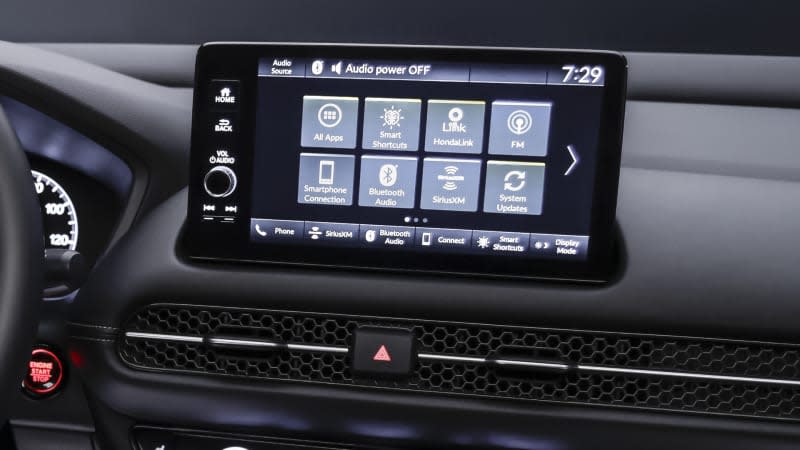
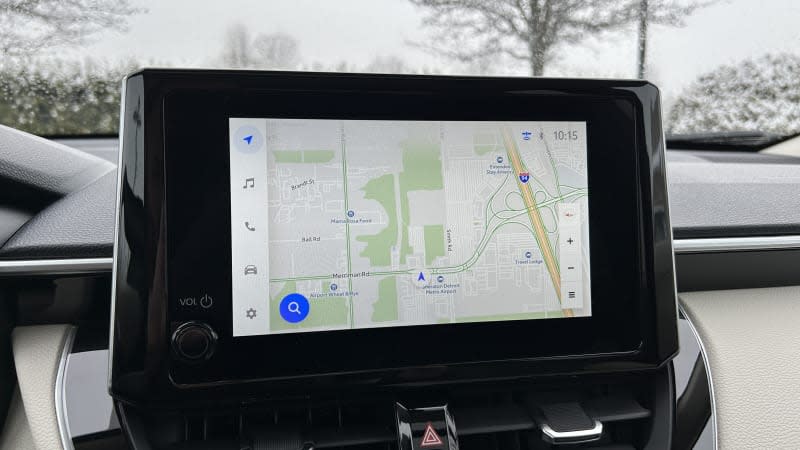
Which has better infotainment technology?
Winner: HR-V
The Corolla Cross has Toyota’s latest infotainment system (above right), and although quicker and prettier than before, there are some usability issues. For instance, it no longer has physical menu shortcut buttons that make it easier to navigate – especially when trying to go back and forth between Apple CarPlay and the car's menus. Honda’s system still has those and is better for it. Now, unlike the Corolla Cross, the HR-V has two infotainment options. The base unit found in the LX and Sport measures 7 inches and is simpler in operation, though still provides Apple CarPlay and Android Auto. The EX-L gets a 9-inch screen (pictured above left) with color graphics, a customizable home screen and permanently docked menu icons. This is the one that looks more comparable to Toyota’s, but both are ultimately easier to use.
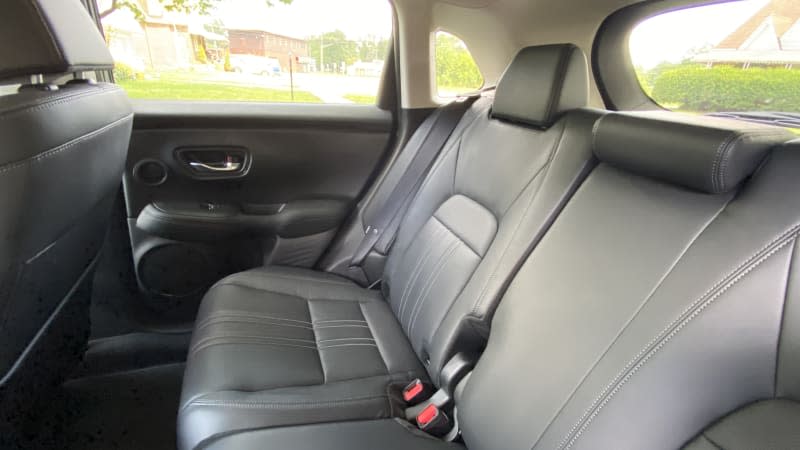
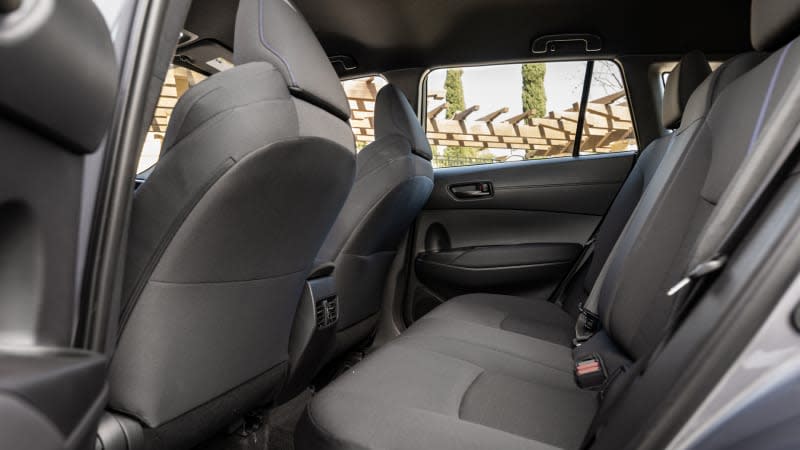
Which has the bigger back seat?
Winner: HR-V
The HR-V (above left) has one of the biggest back seats in its segment, whereas the Corolla Cross is merely average. The specs back that up, with the HR-V measuring 37.7 inches of legroom versus the Corolla Cross’ 32.0 inches. The Toyota does have an extra inch of headroom, but it’s not like our heads were in the Honda’s roof. The HR-V is a more viable choice as a family vehicle.
Which has more cargo capacity and functionality?
Winner: HR-V (maybe)
The HR-V’s cargo volume is greater on paper at 24.4 cubic-feet (pictured below left). In our real-world testing, though, the HR-V underwhelmed due to an angled liftgate opening that robs it of functionality. We still managed to fit six suitcases, but it wasn’t easy. We have not tested the Corolla Cross (pictured below right), which is why we put "maybe" next to the HR-V in the win column up there. On paper, it has 24 cubic-feet of cargo space behind its back seat with front-wheel drive and 21.5 cubic-feet with all-wheel drive or a hybrid powertrain. The Hybrid also loses its spare tire. If hauling stuff is important to you, look to any of the following competitors: Ford Bronco Sport, VW Taos and Kia Seltos.
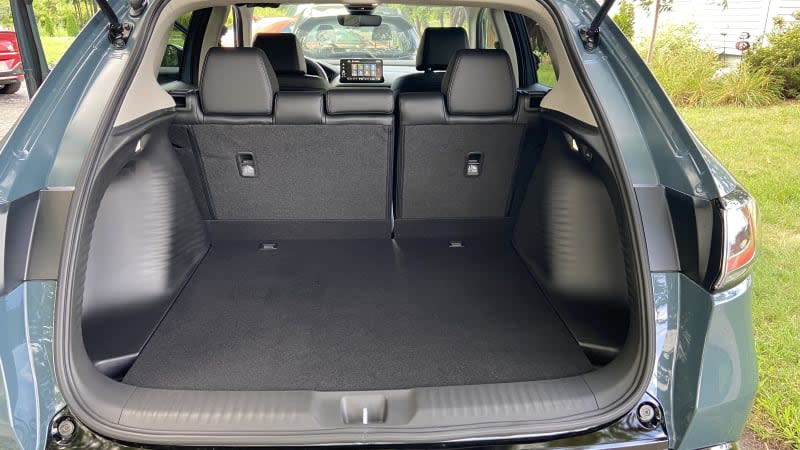

Which is safer?
Winner: Tie
Neither was fully crash tested by the NHTSA at the time of this writing. The Insurance Institute for Highway Safety gave both the best-possible rating of Top Safety Pick+. Only their headlights received something other than a top mark, but were still rated the second-best "Acceptable."
In terms of safety equipment, they are equally equipped apart from the HR-V getting rare rear side airbags. Both come standard with forward collision warning, automatic emergency braking, lane-departure warning, lane-keeping assist, and adaptive cruise control with stop-and-go capability and lane-centering steering assist. Blind-spot warning is standard on all but their base trim levels. Despite having the same features, we broadly consider Honda’s system to be better executed.

 Yahoo Autos
Yahoo Autos 
